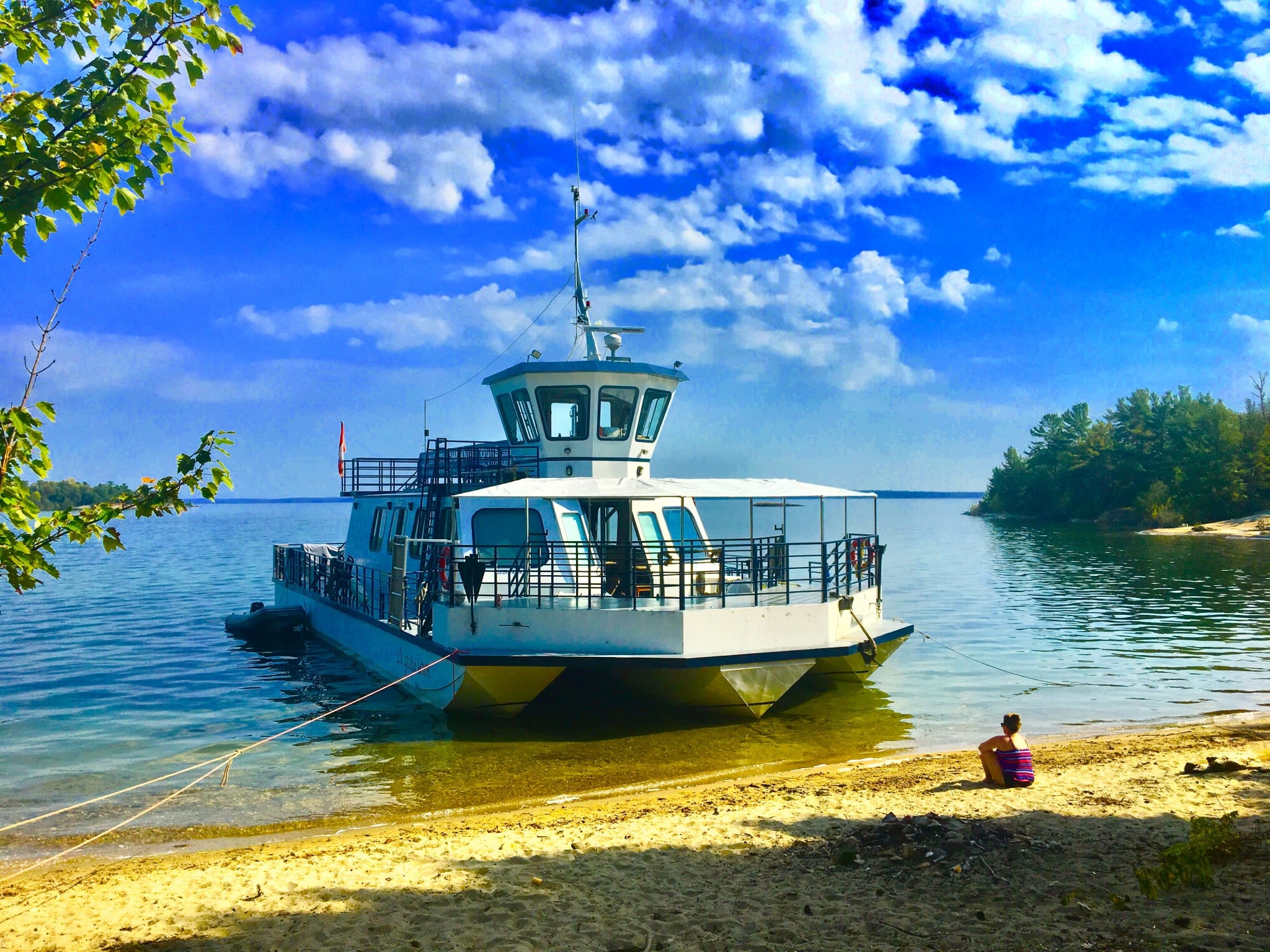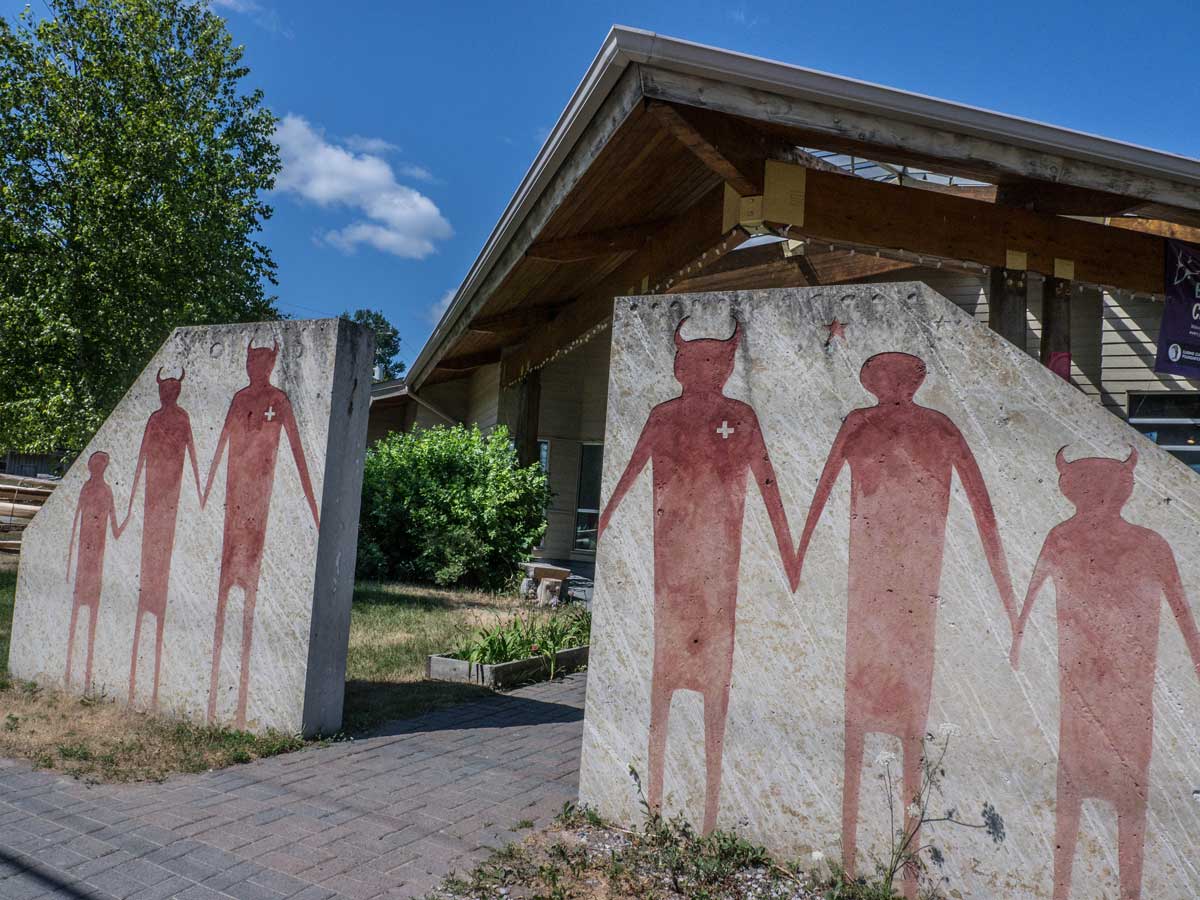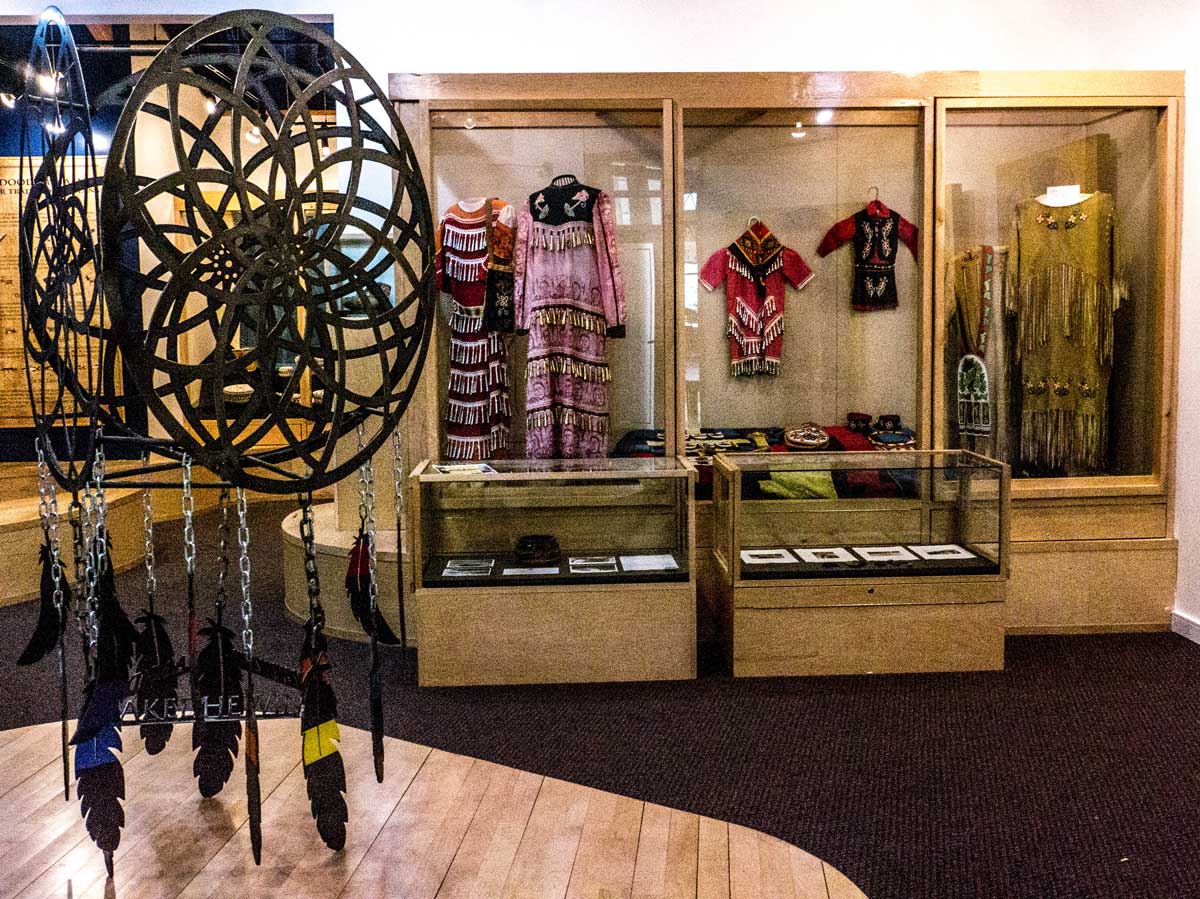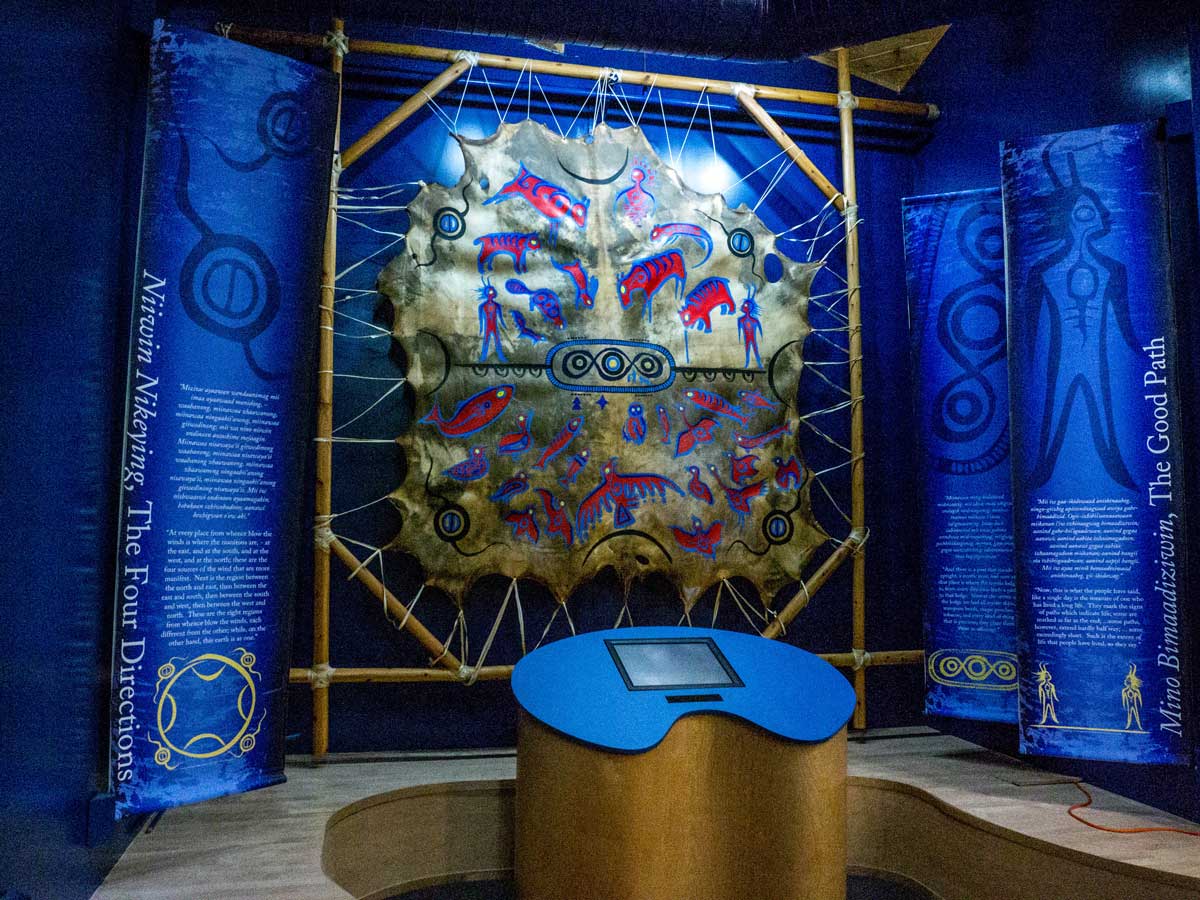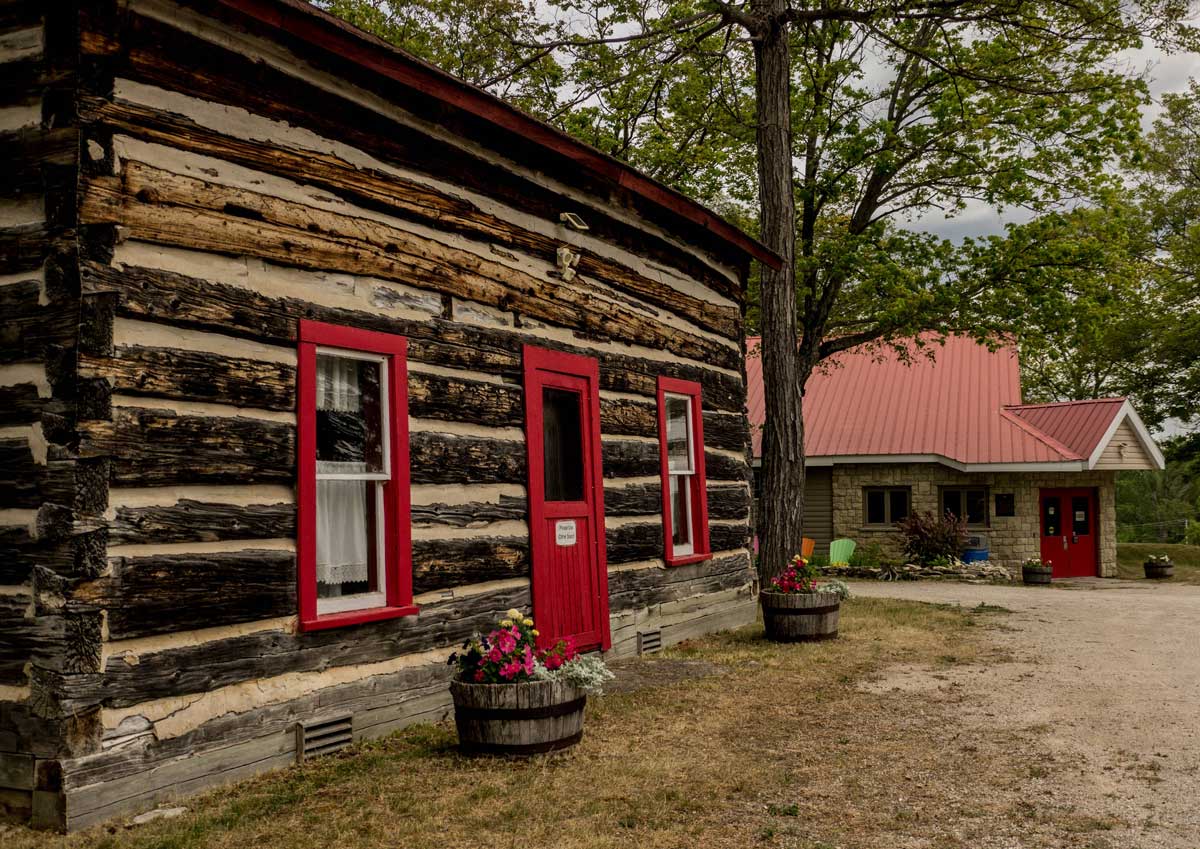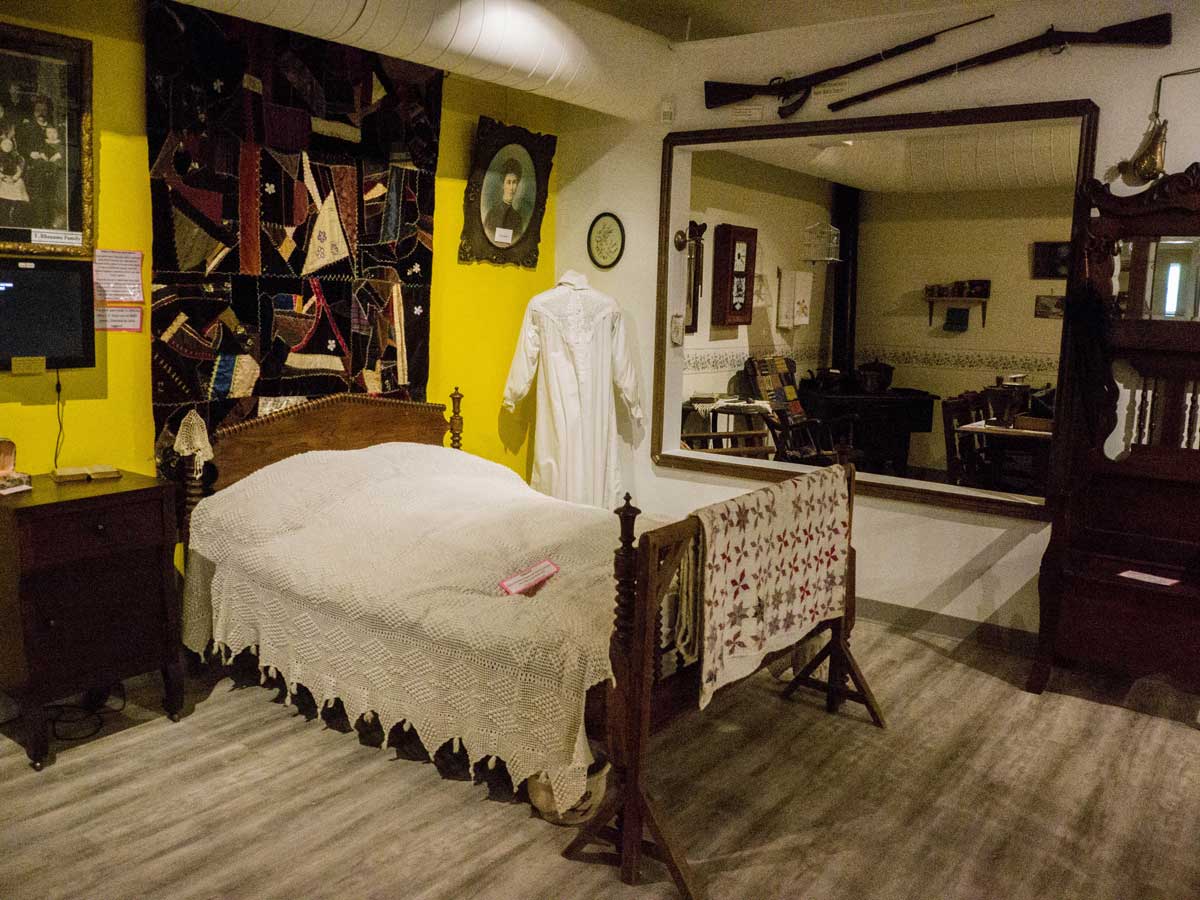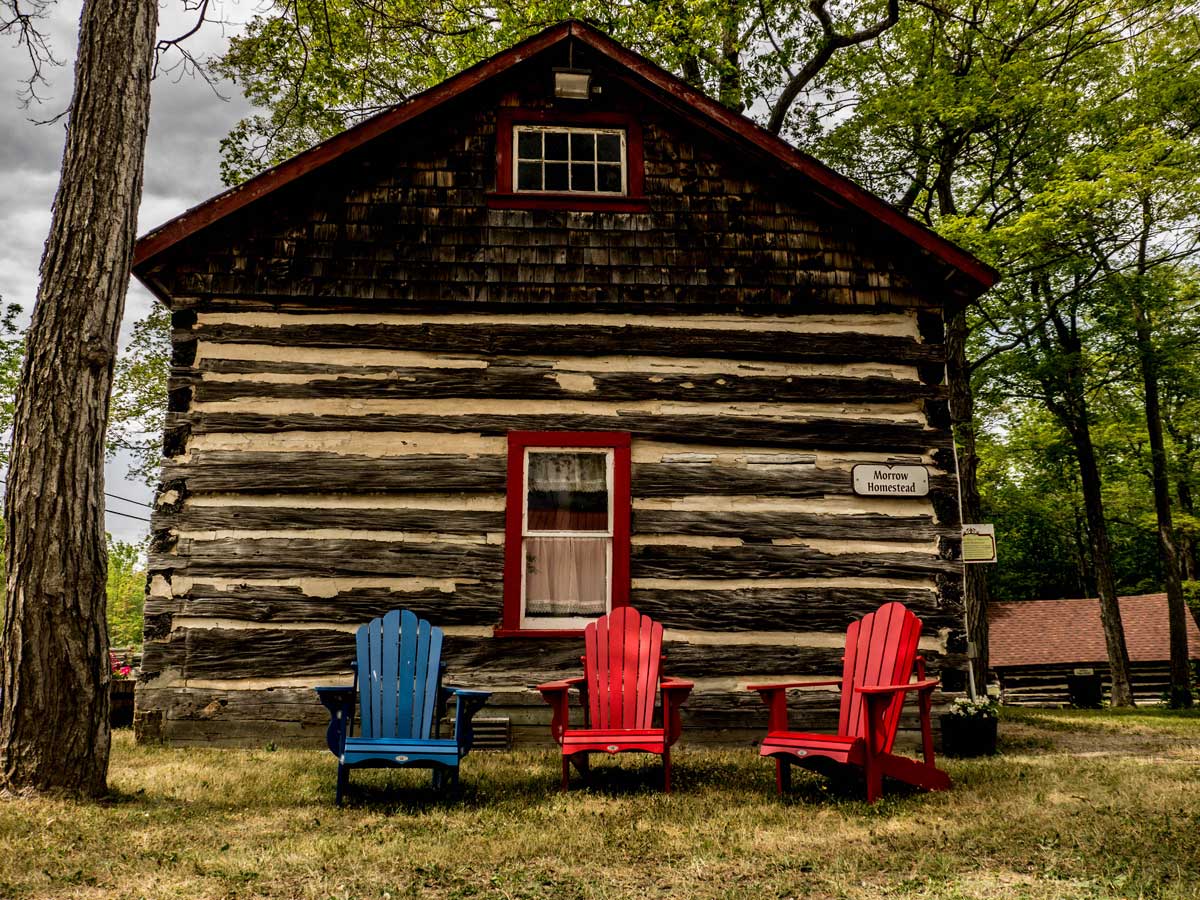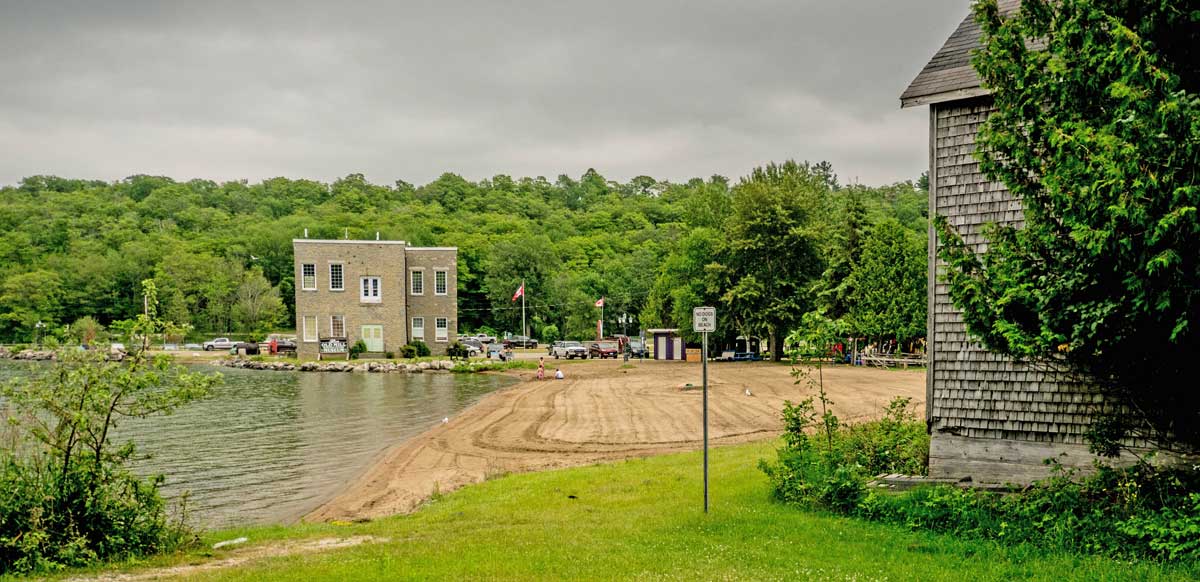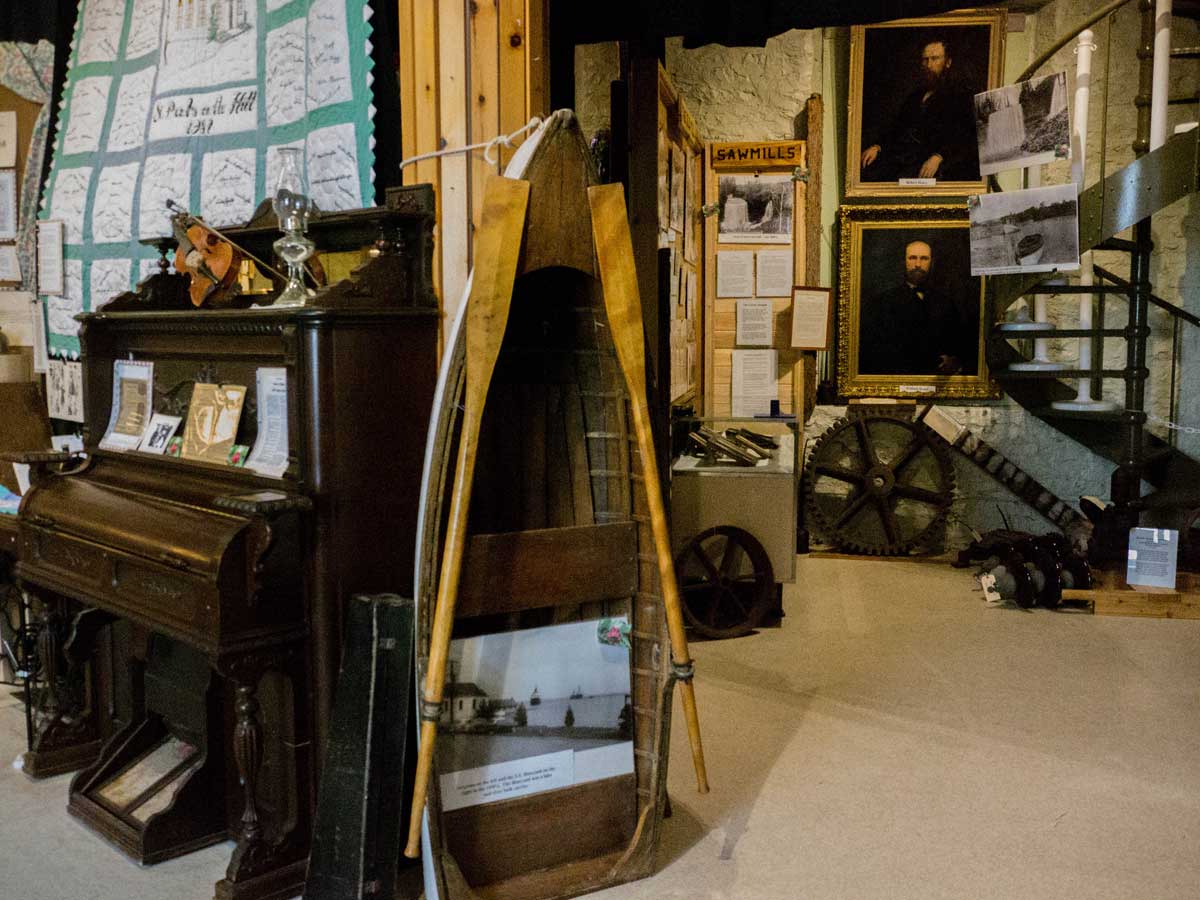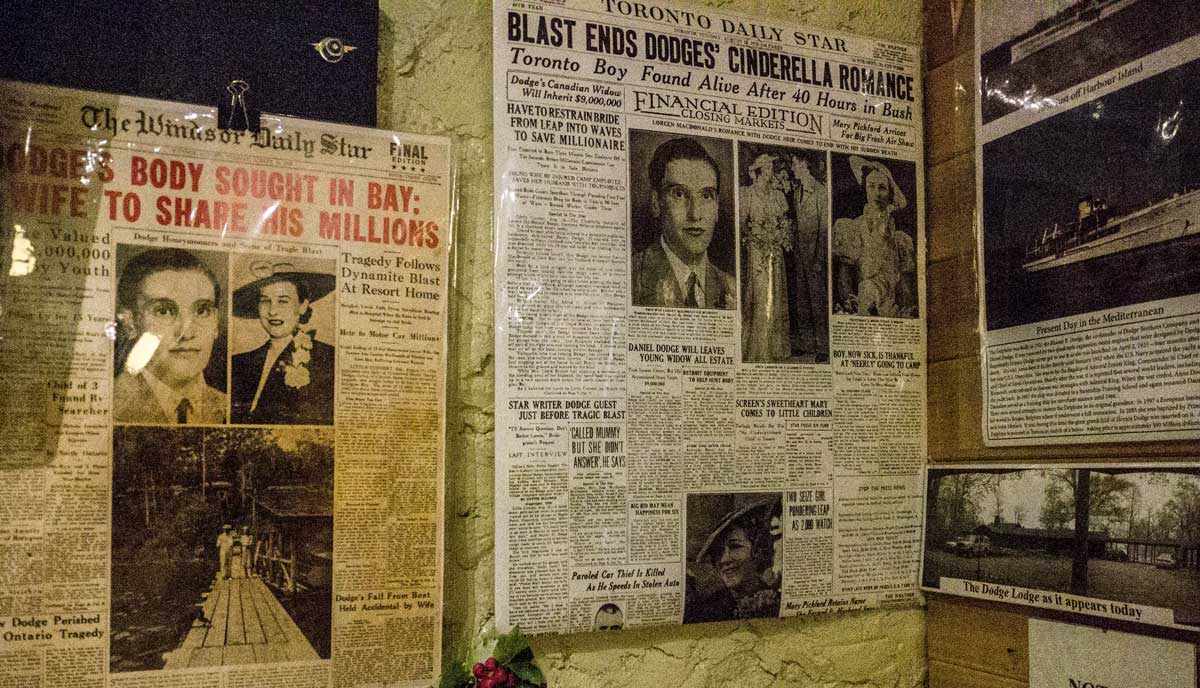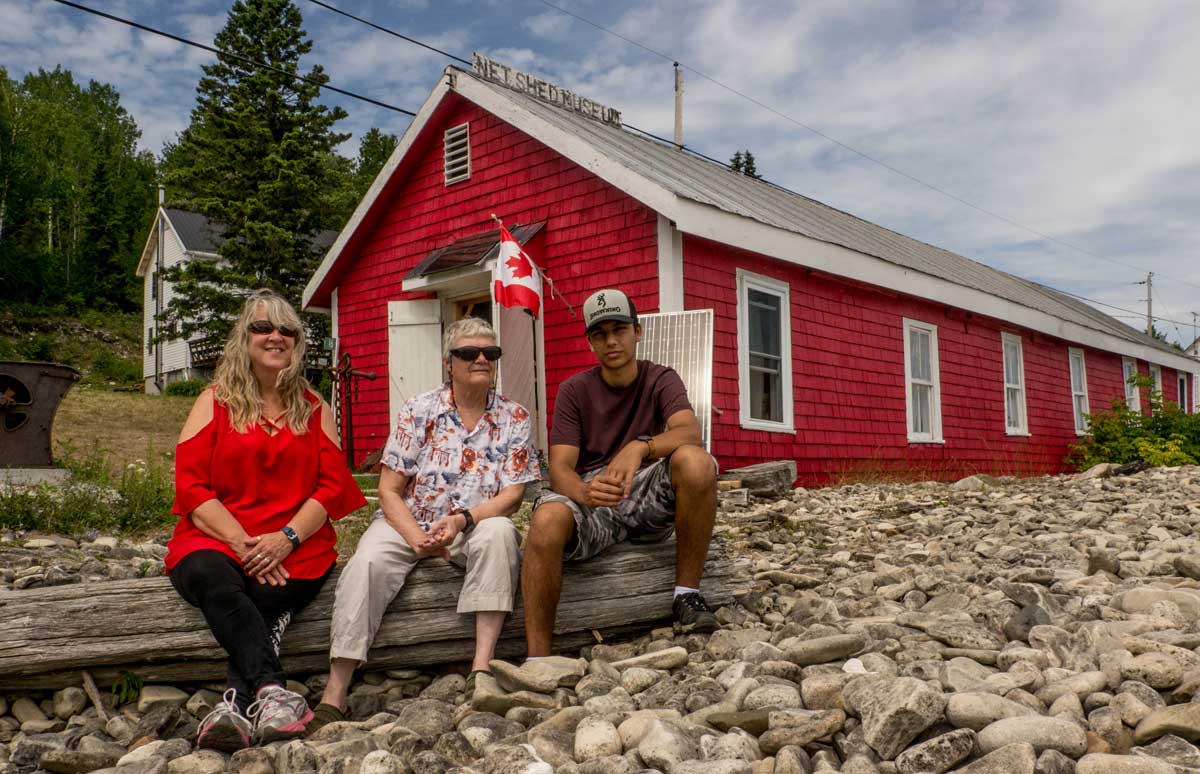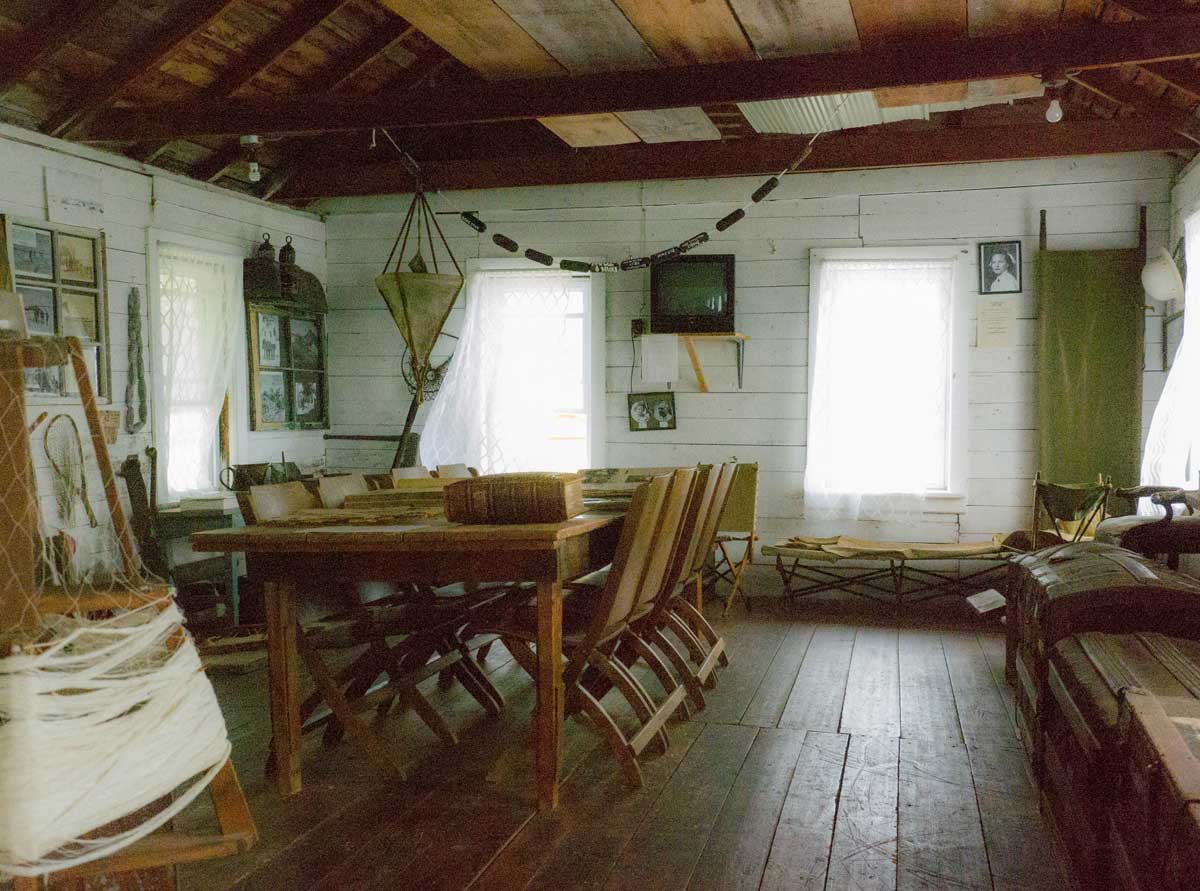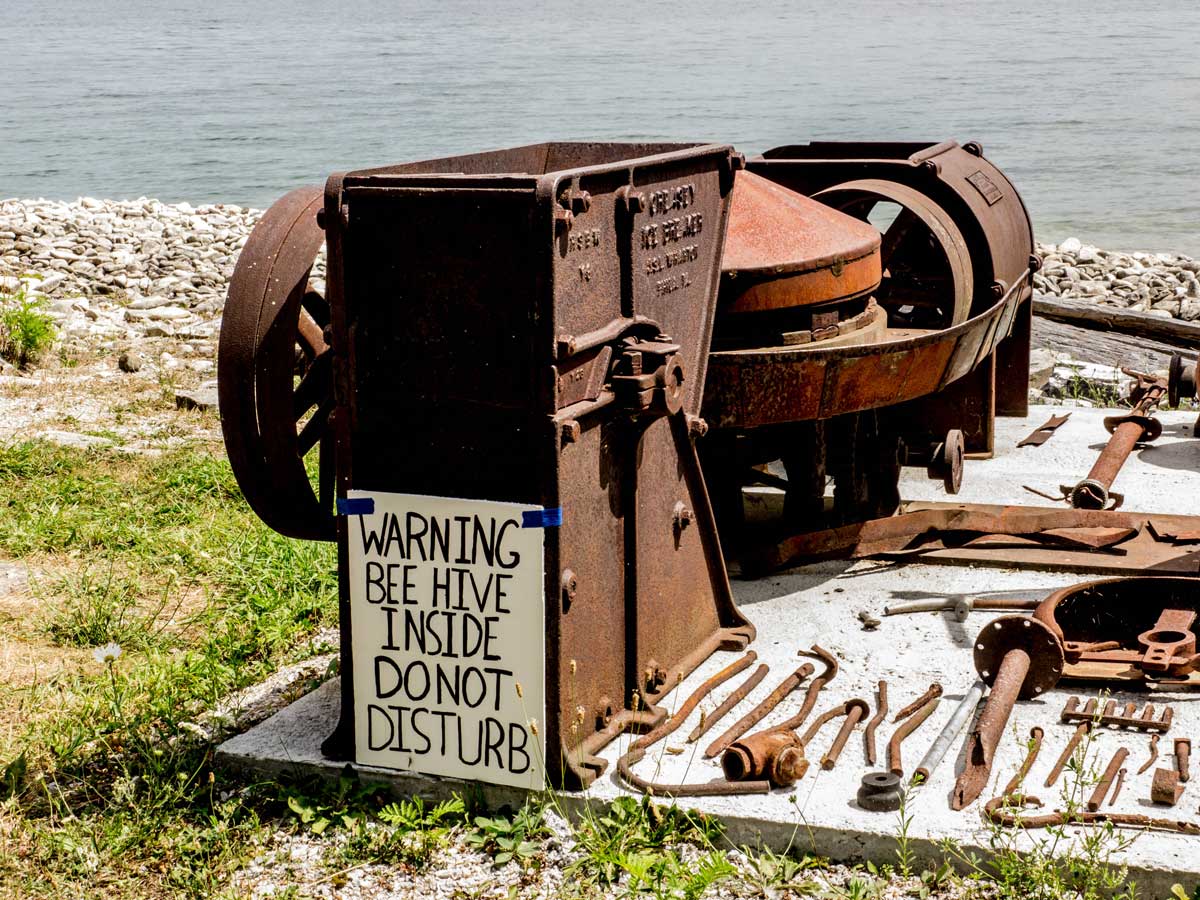Theatre
Live Theatre on Manitoulin
Manitoulin Island is able to boast three theatre groups, each of them unique
Burns Wharf Players
Named after the Manitowaning waterfront warehouse (Burns Wharf) where this talented group treated patrons to 15 years of Gilbert and Sullivan operettas, the Burns Wharf Players are now bringing musical theatre to the revamped Knox United Church (in Manitowaning, at 25 Napier Street) while their beloved playhouse is being restored. The congregation at Knox United invited the players in and, during the spring rehearsal and late spring performances, have literally transformed the church’s sanctuary into a theatre setting. For details on Burns Wharf Players’ offerings, contact the box office at 1-866-967-8167 or book online at www.burnswharf.net
Gore Bay Summer Theatre
Gore Bay Summer Theatre presents two offerings through the month of July each year. This talented and well-directed group of volunteer actors, set designers and carpenters, lighting and sound technicians are also busy in the winter months when they pick a challenging dramatic work, polish it and go on to compete in the Northern Ontario regional drama festival, Quonta. Since they often win this event, they are also often off to Theatre Ontario’s showcase to compete against Ontario’s other regional winners in amateur theatre. The Gore Bay troupe is often successful at the provincial level too.
When you take in a summer production at the Gore Bay Summer Theatre, you’re being entertained by local thespians who hone their craft year-round. To see what’s on, call the box office at 705-2420 extension 3 or visit the town’s website www.gorebay.ca.
When you attend a production at Gore Bay Summer Theatre, you’ll find yourself in the town’s classic community hall at 25 Meredith Street in the downtown core.
De-ba-jeh-mu-jig Storytellers
Debajehmujig Storytellers is one of only a handful of professional Indigenous theatre groups in Canada.
Debajehmujig is headquartered in Wiikwemkoong Unceded Territory but has its offices, rehersal space and theatre space in the village of Manitowaning at the Debajehmujig Creation Centre at 43 Queen Street.
The troupe has been presenting original work for over 35 years and has toured all across Canada and the United States, Europe and Great Britain.
The players present their own work at the Creation Centre theatre space which also often hosts touring performances.
Having their own theatre space gives Debajehmujig Storytellers flexibility and the versatile year-round theatre space is a real asset to Manitoulin Island’s cultural community.
The Creation Centre is also home to an art gallery with continually changing exhibits and installations.
The Debajehmujig Storytellers pride themselves on also being a land-based operation so crew and cast members get, literally, grounded in the growing season by spending some of their time helping to grow food and, each winter, hosting Manitoulin Island’s first ‘seed swap’ of the season. At Thanksgiving, the storytellers host a ‘Six Foot Festival’ of installations that fit in that space and there is an annual Christmas Cabaret show.
In the summer Debajehmujig Storytellers also often produce plays at Wiikwemikoong within the scenic stone ruins of a two-storey dormitory that once housed the community’s parish priests.
It is located on Wikwemikong Way, on top of one of the village’s highest point beside historic Holy Cross Catholic Church.
To find out what is going on at Debajehmujig Storytellers, visit www.storytellers@debaj.ca or call the theatre office at 705-859-1820.
When you take in a summer production at the Gore Bay Summer Theatre, you’re being entertained by local thespians who hone their craft year-round. To see what’s on, call the box office at 705-2420 extension 3 or visit the town’s website www.gorebay.ca.
When you attend a production at Gore Bay Summer Theatre, you’ll find yourself in the town’s classic community hall at 25 Meredith Street in the downtown core.
Canadian Yacht Charters
Canadian Yacht Charters
• Discover the magnificent
North Channel •
Located on Manitoulin Island, CYC offers the finest selection of impeccably maintained modern yachts – sailboats, powerboats and catamarans. Our standard is second to none. CYC is located in the heart of the best freshwater cruising grounds in the world – “The North Channel”. Only 12 miles from the breathtaking Benjamin Islands.
Imagine pink granite islands, millions of years old, covered with windswept pines and scattered throughout a 120 mile expanse of the bluest freshwater in the world. Dozens of untainted anchorages, secret gunkholes and quaint harbour towns make up this “Boater’s Paradise”. This supreme waterway offers breath-taking scenery and solitude yet is within close reach of services and all amenities.
The timeless and unique pink granite of the Benjamin Islands, the protected sailing of the Whalesback Channel and the white quartz cliffs lining the 8 mile fjord of Baie Finn, are but a small part of this world renowned cruising area known as the North Channel of Lake Huron. The North Channel spills into Georgian Bay and there are literally hundreds of beautiful anchorages to discover.
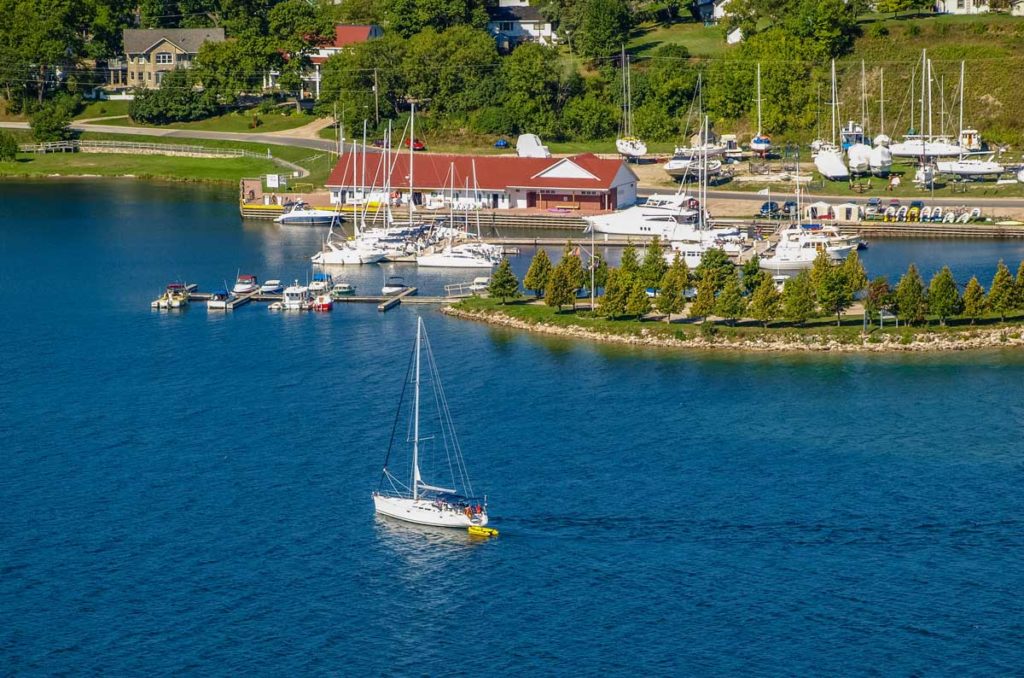

Contact Information:
30 Water Street. Gore Bay, Ontario, Canada. P0P 1H0
- 1-800-565-0022
- Info@CYCNorth.com
- www.cycnorth.com
- 1-800-565-0022
- Info@CYCNorth.com
- www.cycnorth.com
North Channel Cruise Lines
North Channel Cruise Lines
• Discover the magnificent
North Channel •
We offer a variety of maritime services on the waters around Manitoulin. From the Killarney region to the western reaches of the North Channel – our events program is comprised of Regularly Scheduled Adventures offered to the public. Our public events calendar is then carefully woven in with a busy private charter and motor coach agenda.
Our signature tour offerings are comprised of main feature tours operated weekly in the summer and each one is quite diverse from the others. The main tours are known as “Sunset Dinner Cruise” – all with quality live entertainment aboard, “The Benjamin Islands“, “Baie Fine Fjord” and “Voyage to Killarney” adventures. In addition to these events, we are often create unique theme and seasonal offerings such as our Country Fest Songwriter Showcase and numerous dates with top notch live entertainment. From pirate parties to fall colours, we regularly add new events to keep our product range dynamic.
Contact Information:
1 Water St West, Box 596 Little Current, On, P0P 1K0
- 800-268-8222
- info@northchanneltours.com
- northchanneltours.com
- 800-268-8222
- info@northchanneltours.com
- northchanneltours.com
Ojibwe Cultural Foundation
Ojibwe Cultural Foundation
M'Chigeeng
The modern architectural form of the Ojibwe Cultural Foundation (OCF), fully situated in the present, pays homage to the everlasting traditions of the Anishinaabek–the Odawa, Ojibwe and Potawatomi of Manitoulin Island and the Great Lakes region.
Light permeates the open circular atrium that forms the heart of the entryway and of the building itself. Towering cedar poles buttress the room’s soaring canopy, lifting the spirit in the upward gaze. Activities radiate likes spokes from a wheel in offices, a large workshop and activities area, a Healing Lodge, also circular, that holds a sacred fire for ceremonies, Ojibwe language radio station CHYF-FM and a museum that reflects on the inexorable links between traditional creative expression and modern manifestations of Anishinaabek art.
Upon entering the OCF’s museum, a large dreamcatcher bathed in soft spotlight compels the visitor to consider the meanings it conjures. Originally crafted by Ojibwe mothers to protect sleeping children from harm, the dreamcatcher still acts as a symbolic filter, trapping evil and letting good flow through wherever it is hung. This dreamcatcher, in forged steel by M’Chigeeng steelworker artist Kathryn Corbiere, evokes the traditional uses and construction of this beloved cultural emblem, but seems imbued with even more than the usual resistance in its use of materials, perhaps in response to increasing modern threats to the environment, and thus to identity and way of life. A beautiful work of art, Ms. Corbiere’s Dreamcatcher is hung near the museum’s entry doors, a powerful sentinel, a steely reminder of what endures, its metal web perhaps shredding malevolent spirits to bits, allowing only positivity to pass into the museum experience beyond. It’s immediately the sort of cultural encounter that is repeated throughout the exhibits in myriad inspired forms.
“Anishinaabek art history is one of incorporating new materials, of playing with materials in continually re-interpreting traditional art forms,” says OCF Executive Director Anong Migwans Beam, who is a member of M’Chigeeeng First Nation and a widely exhibited multi-media artist.
We pause before two glass cases, each displaying an elaborately beaded1870s ‘bandolier bag’ gifted to the OCF; with a flat bag in front conceived “to show off a big panel of beaded design,” according to Ms. Beam, the bandolier has a wide beaded strap diagonally crossing the chest to one shoulder.
Anishinaabe bandolier bags, modeled on rifle bags worn by Europeans, “evolved with increasing trade in the Great Lakes region and the acquisition of new materials such as cotton and wool cloth, beads and ribbons.” The tiny glass ‘seed beads,’ sewn densely in elaborate patterns onto cotton, wool or hide backing by the women, carpeted the bags in symbolic imagery and dazzling colour to be worn ceremonially by the men. “Beads allowed for curves in patterns where before, the use of quills did not,” says Anong Beam. “The signature floral patterns on these bags were made possible by the flexibility of the newly available materials.”
Beyond the antique bags, another bag is displayed close by, ‘beaded’ by contemporary artist Barry Ace, using salvaged computer components and copper wire to form complex floral motifs based on traditional designs. Says the artist: “I am referencing Anishinaabeg beadwork as a metaphor for cultural continuity, bridging the past with the present and the future, and as a demonstrable act of nationhood, resistance and modernity. My contemporary practice intentionally, yet respectfully, transcends and moves forward conventional Anishinaabeg cultural boundaries as a confluence between the historical and contemporary.”
Confluence is felt in all the Museum’s exhibits: in the art of Christian Chapman, entitled ‘Kings and Queens,’ that fuses silkscreen onto Woodlands-style paintings, in the traditional jingle dress side by side with one silkscreened all over in small faces, in the quill box made by Mamie Migwans and designed by Carl Beam (“she was the first to use toned-down colours in quill work,” says Anong) and in the large display of contemporary quill, black ash and textile art by members of today’s community next to a wall-size interactive introduction to Anishinaabe life precepts.
Anong Beam scans the visually evocative space: “With Anishinaabe art, there is a constant push for new expression. The push comes from a desire to build bridges between traditional and contemporary expressions, to show them together in a continuum of creativity.”
Ojibwe Cultural Foundation: 15 Hwy 551, M’Chigeeng, Tel: 705-377-4902. Open Monday to Friday 8:30 am to 4 pm; Saturday 10 am to 4 pm. Admission by donation. https://ojibweculture.ca
Article by
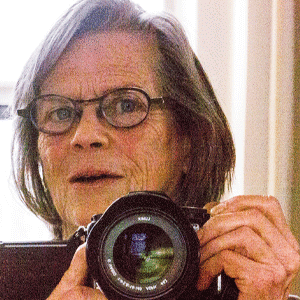
Isobel Harry
Spread the word...
Centennial Museum
Centennial Museum
Sheguiandah
Two museums within easy access to each other, in Little Current and Sheguiandah, each distinctive, tell of prehistoric peoples, of the settlers of large homesteads, the builders of towns and villages, the entrepreneurs and their struggles to establish a foothold on largely forested Manitoulin Island beginning in the 1860s when the land was first opened to settlement.
Up the wide, old staircase to the second floor in Turners store on Water Street in Little Current, tucked into a far corner, is the tiny one-room museum dedicated to the Turner family and mercantile history of the last 140 years. A bit like stumbling upon a cache of treasures in great- (or great- great-) grandfather’s attic, the museum’s collection is stacked here and there throughout the little space in and on old glass store cases and counters; an ancient typewriter collects dust beneath the stern gaze of Turner ancestors whose framed photos cover the walls; yellowed newspapers proclaim achievements, wins in boat races and milestones in the business and political life of the town.
When Isaac and Elizabeth Turner arrived in Little Current in 1877, they had only stopped to rest for a few days before continuing on their journey west in pursuit of advantageous land prices, but the aspect of the flourishing Manitoulin town pleased Elizabeth and she refused to move on. Two years later, Turners was established as a dry goods store, selling everything from flour to rubber boots, pots and pans and cloth by the yard.
Little Current was booming in 1879, having been surveyed in 1864-65, after the Treaty of 1862 removed the Indigenous residents, who had been living on their lands and operating businesses there since the 1850s, to the small nearby reserve of Sucker Creek (now Aundeck Omni Kaning First Nation).
On the steamer route, Little Current became a market town, boosted by the huge trade in lumber. In about 1874, the first small sawmill was built, then the larger Red Mill in 1886 and two other large mills shortly after, hiring hundreds of men and sheltering them in boarding houses along the waterfront.
Later, Turners became widely known for its fine British china and wool; it was the place to shop for mohair sweaters, coats of camelhair, cashmere shawls, linens for table and bed and clothing for the whole family, all imported from England. “Canada’s oldest nautical chart dealer” still sells charts, reflecting the family’s passion for boating of Grant Turner who founded the Great Lakes Cruising Club, and of Jib Turner, a sailor of some repute. The iconic Turners map of Manitoulin was developed by Barney Turner in 1949 after he took a course in cartography; that map, with some improvements in the 1960s and in 2006, has been a big seller for seventy years, its vintage look a favorite of souvenir hunters.
Debby and Jib Turner are the owners of Turners today, in the same building the store has occupied since 1913 when it was built by George Strain, after Turners had occupied two other town locations. “We’re the fifth generation of Turners to carry on the family business,” says Debby Turner, “and we’re waiting on the 6th and 7th generations of customers who have shopped here since the doors opened in 1879.”
“Since the high import tariffs of British Trade Act were imposed in the 1970s, Turners has moved toward becoming wholly Canadian, specializing in more Canadiana and local art in the upstairs gallery,” adds Ms Turner. “Turners of Little Current is still in small part a department store but is mostly focused on quality Canadian products while our new store in Elliott Lake is truly a department store. In a way, Turners has come back to its roots.”
Turners of Little Current, 17 Water St, Little Current. Tel: 705-368-2150 Open Monday to Saturday from 9 am to 5:30 pm; Sunday from 11 am to 4 pm. www.turners.ca
Just 10 kilometres south of Little Current on Hwy 6, the Centennial Museum of Sheguiandah offers a sweeping survey of this area’s origins, beginning with the earliest human activity. Artifacts on display, excavated from a quartzite outcrop nearby known as Sheguiandah Hill and carbon-dated by archeologists to 10,000 years ago, are evidence of quarrying by the first humans on Manitoulin Island after the last Ice Age. In 1954, the Sheguiandah archeological site was designated a National Historic Site of Canada, along with the habitation area that encompasses today’s village of Sheguiandah.
Large descriptive panels outline the anthropological periods here and the two excavations of the 1950s and the 1990s that definitively confirmed the age of the findings; glass cases hold the ancient spear points, hide scrapers and other prehistoric tools that define this museum as unique on the Island.
Like its neighbour Little Current, Sheguiandah was a lumber boomtown at the turn of the twentieth century, with three water-powered mills in operation by 1902: a grist mill (for grinding grains into flour), a sawmill and a woolen mill. A map available free at the museum takes visitors on a historical walking tour through the village of Sheguiandah, highlighting the mills, cheese factory, milliner’s shop, blacksmith, school, post office and hotel of olden days.
The luxuriant grounds of the Centennial Museum are filled with several log cabins furnished in period detail and turn of the century farm machinery; picnic tables and lawn chairs invite visitors to relax and soak up the history of this ancient place.
The modern building housing the Museum itself opens onto a hallway lined with photographs of the area’s first settlers, introducing visitors to the Heis, Nicholson, Skippen, Batman and Lewis families that arrived here over 150 years ago. A family feeling pervades the museum, with an authentic recreation of a cozy bedroom with beautifully hung starched cotton nightdress; other vintage clothing in rich-coloured, well-preserved fabrics dot the room among a selection of antique musical instruments: an elaborately-carved Newcombe piano, a violin and a concertina that enlivened homesteaders’ long winter evenings.
The Museum hosts a wide range of events each year: the annual Heritage Alive Art Exhibition runs from July 18 until August 15, and the Manitoulin Fine Arts Association Members’ Art Show from August 20 until September 8. The full line-up of summer and fall events is listed on the website.
Centennial Museum of Sheguiandah, 10862 Highway 6, Sheguiandah. Tel: 705-368-2367. Open 9 am to 4:30 pm every day from May to October. www.townofnemi.on.ca/places/museum
Article by

Isobel Harry
Spread the word...
Old Mill Heritage Centre
Old Mill Heritage Centre
Kagawong
Island community museums are filled to bursting with mementos of collective histories, gathered by dedicated volunteers and local families keen to foster appreciation of their area’s past. Kagawong’s Old Mill Heritage Centre Museum collections are housed in the former pulp mill, built of stone in 1925 at the edge of Mudge Bay to process the products of the booming logging industry; the atmospheric limestone enclave with its soaring ceilings and tall windows is a perfect showcase for the Billings Township memorabilia contained within.
Curators, by and large, are an enthusiastic lot and Rick Nelson, the Kagawong Museum’s curator, is a prime example of the kind of fervor that marks a successful collection. Quick to praise Billings council’s museum board volunteers’ initiatives and hard work, Mr. Nelson has been the face of the museum for the last 10 years, greeting visitors and orienting them to the treasures awaiting.
Immediately upon entering, the sound and images emanating from a film on the Indigenous origins of Manitoulin Island grounds the museum experience in earliest inhabitation. Further on, a little room holds the delicate line drawings of talented local artist Jenna Carter, each featuring one of the many intact historical structures within the village of Kagawong, with an accompanying map that describes the genesis of all the buildings–for a walkabout later. In the corner, a 1930s wooden radio cabinet plays WWII broadcasts, surrounded by sepia toned photos of local men and women who contributed to the efforts of both World Wars, their uniforms, medals and stories now behind glass.
A highlight in this section is the story of Don Freeborn, the Chapleau-born Manitoulin resident who served in the Royal Canadian Air Force as a Lancaster Bomber pilot, attached to Britain’s Royal Air Force during WWII. His log book on exhibit documents his successful mission to bomb Adolf Hitler’s Eagle’s Nest in the mountains of Bavaria. Next to his father’s log book is the log of Peter Clarke, the son Don Freeborn did not know, until the end of his life, he had fathered in England during the war, and who also had a distinguished military career in Afghanistan, Burma and undercover elsewhere for the British Special Forces. The uniforms of father and son are displayed crisply side by side.
Early settlers to the area, the Graham, Gray, Thompson, McGuiness and Lloyd clans, are posed in the stiff attire and settings of late 19th century photographs. New this year is the realistic recreation of a blacksmith’s shop from the days when horses were essential to settlers’ daily lives. The boat building activities of the Berry family are displayed in authentic period examples of their fine work for over a hundred years, renowned for the sturdy construction of commercial fishing boats, timber tugs and launches powered by steam boilers. Still located in Kagawong and operated by Oliver Newlands, great-grandson of founder Oliver Berry, Berry Boats carries on the family boat building tradition today.
One of Rick Nelson’s favorite museum exhibits recounts the tragedy of the scion of Detroit’s Dodge automobile empire, Danny Dodge, who, in 1938, suffered grave wounds in a spectacular dynamite blast at his Dodge Lodge in Kagawong, then drowned on a desperate rescue mission to Little Current by boat with his wife. Married just 14 days to “Gore Bay beauty” Laurine MacDonald, a romance and fantasy wedding that were trumpeted in local and US media, the unfortunate Mr. Dodge died at 21 but was destined to live on in local legend.
The 80th anniversary of the accident will be commemorated by the Old Mill Heritage Centre on Thursday, August 9 in the annual History Day presentations at 3:30 and 7:30 pm. Each presentation features two parts: a talk by guest speakers on the founding Henry brothers and their role in the birth of Kagawong will be followed by the story of the gripping disaster at Dodge Lodge.
Another ‘ghost story’ depicted in the museum and endlessly fascinating to Mr. Nelson is the one about Harbour Island. Off the coast of Kagawong and nestled in a bay of Clapperton Island, the 30-acre island was home to a luxurious resort in the 40s, 50s and 60s that berthed the yachts of Hollywood stars and hosted the likes of Marlon Brando, Marilyn Monroe, John Wayne, Prime Minister Lester B. Pearson and countless sports figures and business tycoons. Clippings of the goings-on of the celebrity guests cover the wall near photos of the resort in its heyday; underneath is a photo of the sad state of the resort today. “There’s a happy ending!” crows Mr. Nelson as we gaze at the overgrown site and the derelict mid-century modern building. “The new owner of Harbour Island is a descendant of the original owners who is committed to restoring the property to its former glory. The Museum may consider perhaps partnering on a ‘living museum’ concept down the road.”
To whet the appetite for such a restoration project, the Mudge Bay Mystery Tour, a partnership between the Museum and North Channel Cruise Line, will lift anchor on Saturday, August 25 from Kagawong for a two-hour cruise to Harbour Island with dinner, bar and curator Rick Nelson’s onboard “stories and slides” of the famed resort’s past grandeur.
After a tour of the Museum, pause at the Billings Connections Trail Interactive Map on the wall by reception. In English, French and Ojibwe languages, the map shows the locations of historical plaques in the village and of the outdoor sculpture sites commissioned as a Truth and Reconciliation project in partnership with 4Elements and Billings Township “to highlight the local heritage and history of Anishinaabeg and settler residents.” A pocket-sized map is available to take on an exploration that continues well beyond the Museum’s steps.
The Old Mill Heritage Centre Museum, Kagawong
Open every day 10-4 (July-August)
Tel: 705-282-1442
Admission is free; donations are appreciated.
Article by

Isobel Harry
Spread the word...
The Net Shed
The Net Shed Museum
Meldrum Bay
Nearly 150 years ago, Meldrum Bay began to be settled by Scots coming to Manitoulin Island from southern Ontario, attracting fiercely dogged, independent-spirited types drawn by cheap, plentiful land covered in virgin forest and the immeasurable waters of Lake Huron teeming with fish.
Working with the first survey party of 1876 in Dawson township, the original settlers staked their claims, under which conditions they had to clear and fence five acres and build a house (usually a two-room log cabin) before they could own their land’s title. Then, they would venture over the water to Cockburn Island’s land office to acquire their patents–two settlers drowned on that treacherous journey–or by foot in all-weather through bush to Gore Bay’s land office. The hardships, the harsh winters and lack of even the most basic supplies, the isolation and backbreaking work of survival, the innovations and small victories of those days are stuff of legend. No roads, electricity, telephones, doctor or dentist softened the tough, often brutal, way of life.
In the early 1880s, lumbering quickly became a thriving industry everywhere on the Island, with sawmills built in all the feasible ports for easy transport of logs and lumber by boat to the US and England. Meldrum Bay’s fist sawmill was built in 1880, situated where the marina sits today, hiring hundreds of workers to process the huge quantities of wood being harvested up, down and around the Island’s western tip.
Fishing also became big business; fish abounded in these Great Lakes waters and the 1890s saw fishing stations built to supply the boats from Collingwood and Sarnia with as much as 24 tons of fish weekly.
Several net sheds ringed the bay, their rooms and attics large and airy workshops in which to dry and repair nets; the day’s catch was packed for shipping and the fishermen prepared for the next morning’s pre-dawn start on the lake. In a few short years after settlement, Meldrum Bay was a boomtown with stores, hotels, blacksmiths, school and boarding houses to service the flourishing community.
Now home to the Net Shed Museum, the last remaining net shed in the bay, built by fisherman Joe Millman in about 1902, stands resplendent in its lighthouse-red, original cedar shakes. The long, rustic building offers itself to be savoured as a unique historical artifact in its own right.
Inside, small windows on three sides and wide screened doors on the fourth side let in a surprising amount of light through gauzy curtains; the wide plank floors, heavy log rafters and poles supporting the ceiling testify to the handmade origins of the structure.
Founded in 1967 by the Meldrum Bay Historical Society as a Canada Centennial project, the museum is maintained scrupulously inside and out by a dedicated band of community volunteers. Across the road in Joe Millman’s old family home lives the treasurer of the Historical Society, Dawn Marie Wickett, a descendant of Millman’s through marriage into the Millman/Wickett families. She can look out her front windows and keep an eye on the net shed all year long while her husband Mark keeps up with improvements. Nephew Adam George Wickett is this year’s summer museum intern who greets visitors and keeps the place spiffy; a high school student, he lives in Brampton and loves to re-live Meldrum Bay summers and stay with his grandmother. The president of the Historical Society is Liz Durham, who lives just up the hill and has been active in the museum since its founding, taking part, with other volunteers, in the annual opening of the museum in spring and closing in fall and in dreaming up fundraisers such as the popular annual beef barbecue.
Community members donated all the museum’s artifacts: jewellery, beaded appliqués and sewing baskets, photographs, linens, washtubs and irons, butter churn and moulds, quilts, school desks and blacksmith and farming implements. “Remember,” says Liz Durham, “electric power only came to the village in 1950. Until then, people used coal oil lanterns and phones were hand-cranked.” One donation, from the Joyce family, was of two large steamer trunks full of beautiful clothes and trimmings that had been owned by their “two elegant Irish dressmaker cousins.”
Toward the back of the shed, artifacts from the steam mill, a leather blacksmith apron and tools lead the way into the marine history room, centered by a library table covered in scrapbooks for browsing. Models of Millman’s tugs, named after his daughters, sit in glass cases; memorabilia from the ‘Alberta’ include a hand-fashioned horse motif weather vane and steam whistle.
The vast waters of Lake Huron lapping the rocky shore just a few feet outside the windows provide the nautical backdrop to one of the greatest marine mysteries of Manitoulin Island. Here, laid out in timbers and chains and fascinating found bits, is a display of ‘Le Griffon’–a French ship that sank in the Mississagi Straits in 1679. Or did it? Stories have proliferated over the years, of how the ship, navigating by compass, was drawn helplessly into the infamous magnetic shoals; of the skeletons of crew members found in a nearby cave, including a “very large” skull, said to be that of the pilot, Luke the Dane, known to have a very large head; of the found watch case, buttons and coins stored for years in the Mississagi Lighthouse before vanishing. It is a story that has fascinated people in these parts and abroad for centuries and remains an unsolved puzzle to this day.
Even now, Meldrum Bay retains the spirit of rugged determination that marked its beginnings. The Township of Dawson is officially ‘Unorganized’ – there is no municipal council, nor reeve, to run things. Says Liz Durham, “All public works in the township and the village of Meldrum Bay are done by volunteers. The Dawson Citizens Improvement Association raises money and volunteers to put the marina docks in and take them out every year; we applied for and got grants for the re-installation of gas tanks and pump-out service. A Service Board collects taxes to pay for snowplow and dump contracts; there’s no water department, everyone has their own water. When we need to get things done, we do it ourselves, together.”
The Net Shed Museum is a moving testament to the resolve and perseverance of the generations who pioneered here, and to a very large extent in this faraway outpost, still do.
1 Water Street, Meldrum Bay. Open Tuesday to Sunday, 12 pm to 4 pm and to 9 pm in July and August.
Article by

Isobel Harry
Spread the word...
Point Grondine Park
Point Grondine Park
Difficulty ★★★★ • Approx. 2 – 4 Hours
- Car Park
- Public Toilets
- Pet Friendly
- Wheelchair Accessible
A First Nation owned and operated recreational park, Point Grondine has over 7,000 hectares of scenic natural wilderness landscape, old growth pine forest, stunning river vistas and eight interior lakes to explore. The trailhead is ideally situated off Killarney Highway 637 nestled between the Killarney and French River Provincial Parks; it is in the northern terminus of the Georgian Bay Coast Trail, a sustainable world-class hiking trail in the spectacular landscape of the UNESCO Georgian Bay Biosphere Reserve. The park is accessible through mandatory park permits that can be purchased online at www.grondinepark.com or by calling 1-705-859-3477.
You may wish to bring:
- Water
- Snacks
- Camera
- Compass
Tips from a Local
The trails on Manitoulin Island have some of the best views around. Bring along a camera to capture your trip and leave the trails exactly as you found them so others can enjoy the hikes. Remember: take only pictures, leave only footprints.
Sheshegwaning – Nimkee’s Hiking Trail
Sheshegwaning - Nimkee's Hiking Trail
Difficulty ★★ • Approx. 3-6 Hours
- Car Park
- Public Toilets
- Pet Friendly
- Wheelchair Accessible
North of Silver Water, off Hwy 540, the Sheshegwaning First Nation is developing a 20km trail, which can be enjoyed in several sections, some offering wonderful views of the North Channel. There are facilities for camping and picnicking, Trail maps are available at the Band Office or at the Gas/ Convenience store at the trailhead. Allow 3 to 6 hours.
You may wish to bring:
- Water
- Snacks
- Camera
- Compass
Tips from a Local
Manitoulin hikes can to have a lot of elevation changes over rough terrain. Be sure to pack plenty of water for each person and carry it in a backpack or other hands-free carrier. That way, you’ll have your hands ready to help navigate the trails.




